Material Test Descriptions |
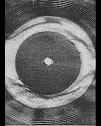 Leather Leather
Competition Weight
3 oz./sq. ft.
Quickly scrubbing off the leather's shiny brown surface, the wheels slowly tore and ripped
the fibers below-which puffed off the surface like baking bread. At 700 revolutions, the lab
analyst sighted a defect- a tiny scratch in the hide. "Could be a problem later," he warned.
As the wheels ground lower -approaching 1500 revolutions- the crack grew darker and more
ominous. But the hide resisted 1100 more revolutions until breaking through at its weakest
point.
Result:2600 Revolutions
|
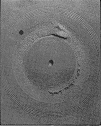 Leather Leather
Lightweight Nude Finish
2.25 oz./sq. ft.
Within 100 revolutions this samples beige surface had scuffed away. The sharp, interior edges of the grinding wheels then sliced deep into the hide's furry interior-a dark incision growing in the white fluff.
Result:564 Revolutions
|
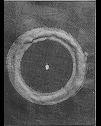 Leather Leather
Fashion Weight
1.75 oz./sq. ft.
Suprisingly, this lighter fashion weight leather outlasted the heavier nude sample. At 200 revolutions, the lime color had peeled off the acrylic coating and the wheels quickly tunneled below the surface, probing the hides thickness and weight. Only 550 revolutions later the sample failed.
Result:750 Revolutions
|
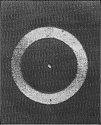 Cordura Nylon Cordura Nylon
Type 440
0.89 oz./sq. ft.
By revolution 200, the Cordura had sustained serious damage: its Zepel-water-proof coating provided no defense for the red nylon fibers on the surface-which were easily teased out of their yarns. By 300 revolutions the ABRASER had churned up torn chunks of red nylon, and the white, polyurethane backing appeared.
"That backing won't help," said the lab analyst, as the wheel quickly broke through the polyurethane.
Result:559 Revolutions
|
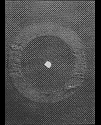 Senior Ballistic Nylon Senior Ballistic Nylon
1.5 oz./sq. ft.
Like Cordura Nylon, the filaments of Senior Ballistic immediately frothed as the wheels teased them out of their yarns. But this woven nylon's strength and density (measured at 1050 denier, a unit expressing fiber mass) allowed the test sample to resist the wheel with good success.
Result:817 Revolutions
|
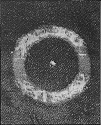 Denim Denim
(New)
1.6 oz./sq. ft.
As the wheel hit the jeans, the bluedye lifted and a ring of damage flashed white. The cotton twills lasted longer than the dye, but, unlike the yarns of Senior Ballistic, Codura or the Kevlar - whose filaments were simply cut and frayed - the denim's twills were immediatly pulled out of their configuration and ruptured.
Result:225 Revolutions
|
 Denim Denim
(2 yrs. old)
1.6 oz./sq. ft.
These old jeans deteriorated much like the new ones: the wheels tore a white ring into the fabric by gnawing through the faded denim finish. Breakthrough came early as the faded denim - perhaps the most commonly worn by motorcyclists - failed faster than anything other material tested.
Result:168 Revolutions
|
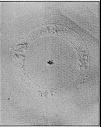 Kevlar 29 Kevlar 29
Aramid-Style 713
0.19 oz./sq. ft.
"This stuff might take us weeks," said the lab analyst as he struggled with heavy scissors to cut the Kevlar sample. "My supervisor and I guessed this sample would go to 30,000 cycles." But when the ABRASER wheels hit the yellow surface of the Kevlar, the surface foamed with teased and frayed yellow fibers. By 200 revolutions, the wheels had steadily churned into the weave and through the yarns without resistance or any period of stabilization. Much ealier than ezpected, the strong Kevlar fell victim to the grinding wheels' tiny aggregates.
Result:506 Revolutions
|
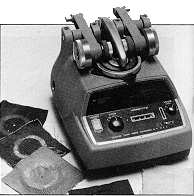
 Leather
Leather Leather
Leather Leather
Leather Cordura Nylon
Cordura Nylon Senior Ballistic Nylon
Senior Ballistic Nylon Denim
Denim Denim
Denim Kevlar 29
Kevlar 29